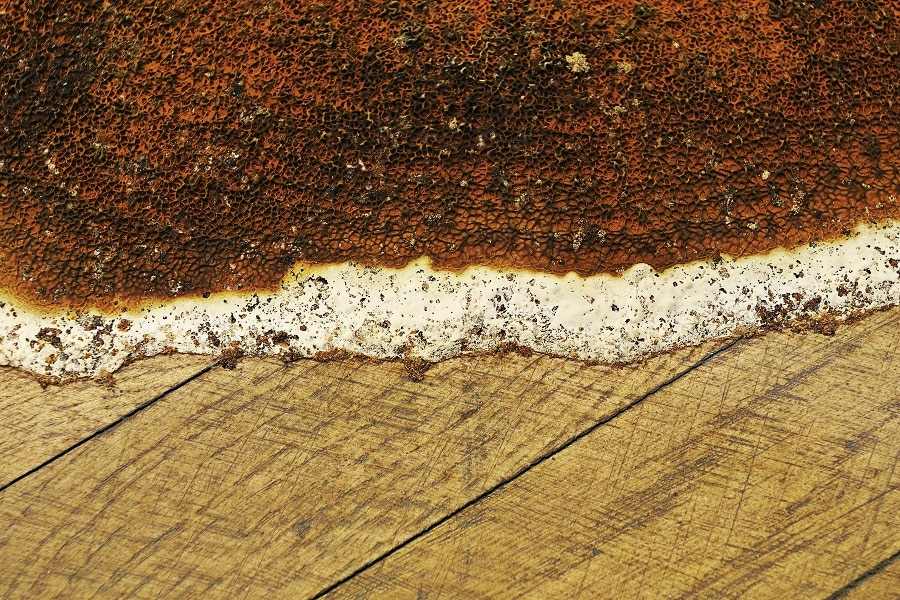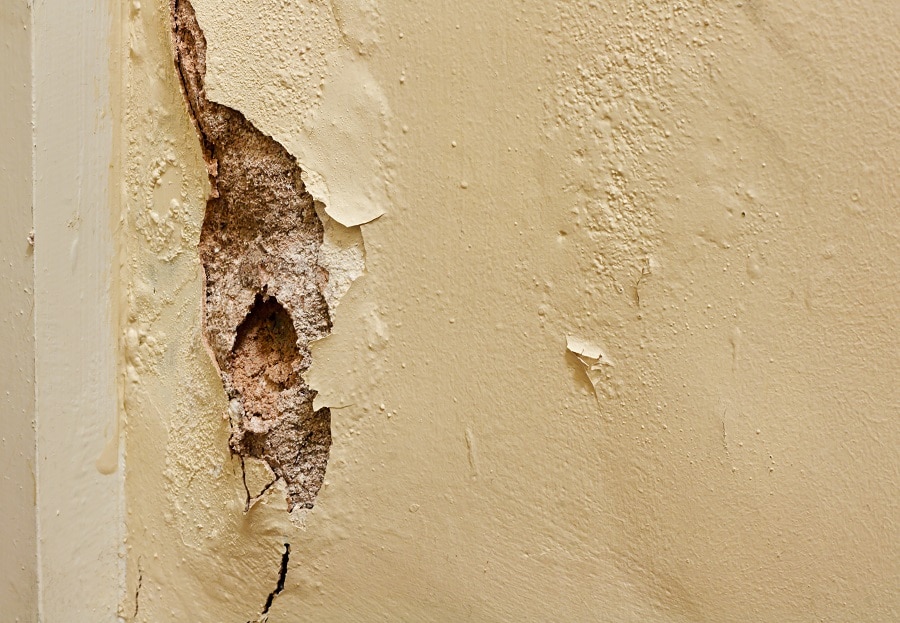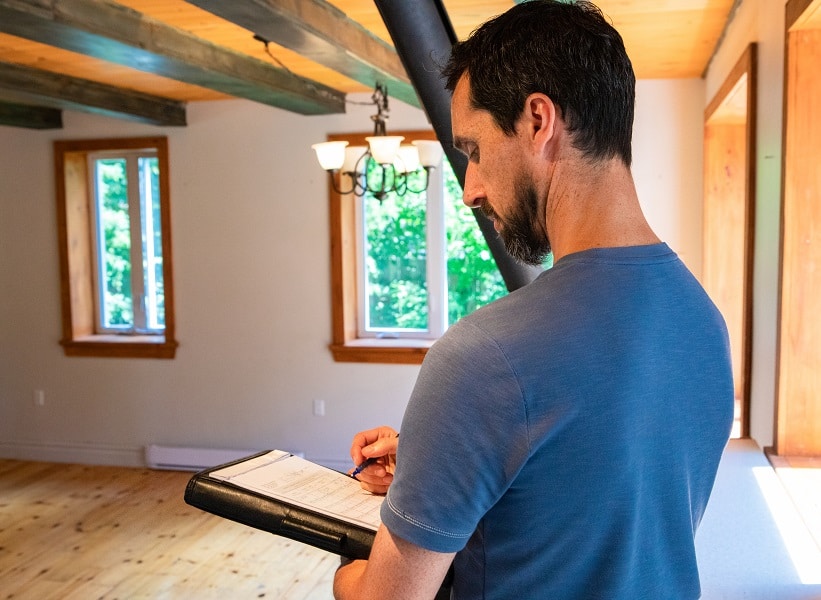What is dry rot?
Dry rot is a general term which describes a type of wood decay fungus Once the surface of the Wood is broken down by the Sporocarp fungi, it gives way to Mycelium that consumes the wood and dries it out effectively; the end result is a fine dust and dry rot bloom. Dry rot is caused by fungal spores which require a suitable place to land and start their colonies before spreading through the underlying wood. Dry rot spores can be present in the soil and already affected old woods.
This ensures that even treated wood will be re-infected with dry rot if it is wet enough (i.e., below 15 percent relative humidity). Dry Rot does far greater damage than Wet Rot, you can be surprised to learn that dry rot fungus will invade structural wood in your property while remaining undetected. It often happens where you don’t look. This can be behind the plaster, under your floorboards or even in your loft. This is why it’s essential to know the signs and symptoms of dry rot and to get it treated quickly.
Our Guarantee
- upto 30 year guarantee
- customer focused team
- 20 years combined experience
- portfolio of satified customers
- attention to detail
- Construction line accreditation
- public liability insurance
- CHAS accreditation
What is the difference between dry rot and wet rot?
Dry rot and wet rot have distinct spores/species, which means they look different. The biggest difference, however, is that wet rot needs significant moisture to spread. Another significant difference to be aware of is that wet rot can spread across larger areas faster. This is because the use of oils within timbers effectively fills the capillaries that Dry Rot requires for infestation. Dry rot fungus can be “silent”, but it is very active and spreads incredibly quickly once it has taken hold in a property. The consequences of wet rot fungus are not that serious, the decay is confined to areas where the timber becomes and remains wet.
Call Our Sussex Damp Experts team now for quote, consultation and advice:
Call on 01273 257 765.
What are the causes of dry rot?
Many species of fungi cause dry rot. The most popular one in Southwick is Serpula Lacrymans. If it is not managed soon enough, it will spread across your home and brick and stone, and even plaster. Structural issues with the timber will seriously compromise your houses structural integrity. Dry rot attacks anytime you have an unsafe level of moisture in your wood. This will attract the fungus that will use this moisture to extract nutrients. The expression “dry rot” is used to contrast between “wet wood” and “dry wood rot.”
Wet timber feeds on dry rot. Fungal spores require over 30% moisture to generate hyphae, which in turn can survive with 20% moisture. They are the only living organism that can form three-dimensional networks of hyphae, which can lead to mycelia that spread over considerable distances. Once the rot has taken over, it weakens the wood and leaves behind a skeleton structure of the wood, removing H2O, cellulose and hemicellulose from your wood. You need an expert to examine your property and determine whether your rotting timber is a result of dry rot or a different type of fungus. This is really important since the cure for these damages can differ based on the actual cause.

The dangers of dry rot in Southwick
Dry Rot Effect on your Property
Dry rot can cause irreparable damage to wood and other materials in your home. Dry Rot is a fungus that attacks timber by breaking it down, causing timber to crumble. In extreme circumstances, this can cause different sections of your home to fall apart. Dry rot, however, does not attack your brick or stone; it only travels across it. That is why routine checks are necessary.
Dry Rot is a severe issue, which needs immediate maintenance and treatment. When fungus is evident, you need to call a restoration expert right away to prevent mold growth from worsening any damage that may be apparent. If you think that you might have an issue with dry rot or dampness in your home, check out Sussex Damp Experts today.
Dry Rot Effect on Your personal health
Actually it is not the fungus that causes the damage. The existence of dry rot can cause a number of health problems. This is especially precarious for the elderly, children and anyone with respiratory conditions such as asthma.
What are the Warning Signs of Dry Rot?
Treatment and remedial works are substantially more expensive than early detection and prevention. If you see any of the signs and symptoms listed below, a full assessment is recommended.
-
The beginning of the dry rot cycle
Spores of dry rot are transported by the wind. If they are carried onto timber, they will begin to feed on it. The fungus then hyphae will germinate and start to spread through the timber if the wood gives them enough nutrients. The hyphae grow and join up into a lot of tangled spaghetti-like threads called mycelium. Mycelium may be white or light grey. Mycelium is mostly found between property’s bricks, mortar and plaster and can also try and spread into timber greatly.
-
Your timber is damaged.
It affects every part of the wood, from the bark to the core, causing it to wither and die. This could lead to the collapse of your timber. You may observe the dry rot changing the color of your timber. Specifically, dry rot can cause something called cuboidal cracking. Cuboidal cracking is when timber breaks up into cubes that are around 50 mm in width. Sometimes, this damaged wood may also have hyphae, white fungal growth. Hyphae can look like cobwebs and is a common symptom of dry rot.
-
Your timber will smell.
If you smell a strong, fungal, dank and musty odour in your timber, it is likely to be affected by dry rot. Dry rot is often not noticed until it has damaged structural elements. Despite the odor, dry rot may not yet begun to grow.
-
Your timber will have fungus bodies on it.
This is the final stage of dry rot and the most noticeable. Mushrooms such as fruiting bodies might start to join themselves with your timber. They occur when dry rot can no longer feed on the wood, so the fungus has to churn out spores instead.
-
Your timber will have spore dust.
Spores of the dry rot fungus don’t just occur in woods already affected by dry rot. It could be a sign of dry rot if you see splots of rusty colored dust embedded decomposed spores. In the last step of the dry rot stage, fruiting bodies yield spore dust.
Dry Rot Treatment in Southwick

Only when the moisture is over 20% will a dry rot invasion take place. The first defense to eliminate the presence of fungus lies on controlling the levels of moisture in your living space or property. You are now in charge of the moisture levels. We advise you to commission an expert in order to treat dry rot.
Any contaminated timber removal and any repair work is handled by Souther Damp Proofing. A professional should remove any infected timber. The exact treatment is known by a professional damp proofing expert. Some treatments are injected into the timber, others coat the surface of the timber. Preventive treatment options are many, These chemicals require specific concentrations and can have unpleasant side effects if inhaled or injected accidentally.
Your timber may require Boron roads injection from a professional. It’s a well known fact that Boron is a lethal material, that’s why we always make sure all of our damp proofing experts wear the right safety clothing. With our specialist team at damp proofing, we will be able to find any issues with dry rot and assess the extent of the issue. If left untreated, dry rot can lead to the structural failure of a wooden structure. If dry rot is not treated promptly, it can spread across your property and do real harm. Our team at Sussex Damp Experts will implement a suitable treatment that addresses your problem efficiently and cost-effectively. You shouldn’t delay. If you think you have a problem with dry rot, call 01273 257 765 for a free survey, and effective treatment today.
How can you prevent dry rot damage in Southwick?
The first step in treatment is to avoid dry rot. Any wooded areas of the house that traps enough water and is subject to humidity/moisture ingress can result in a dry rot infestation. Here are some of the behaviors that would prohibit them from forming: Always ensure there are no leaks in your property. Facilitate sufficient ventilation.
Ventilate correctly and envelop the attic. Oxygenate crawlspaces very well. Keep everything dry down there with watertight crawl space floors. Check all wall and roof flashing to ensure water is being directed properly. Maintain clear sinks and downspouts. It’s a very good idea to check your pipes and heating system for leaks when using a wet system Owing to the humid conditions needed for dry rot fungus to be fed and germinated, the easiest way to reduce the possibility of dry rot is to decrease moisture levels. For example, plugging the leak will help avoid dry redness by providing a pipe that leaks.
Speak to a Dry Rot specialist in Southwick
We are ready to cope with any damp or dry rot issues involving your property or house. We will provide a free written estimate prior to beginning any work so that you know exactly what to expect. Over the years, we supported the damp concerns of thousands of home Southwick owners and could even benefit you. You can get in touch with us for a free consultation and quote on 01273 257 765. A qualified Plasterboard dry rot expert will diagnose your home to determine what the extent of the infestation is We are not tied to any special interest groups or companies, and can therefore give you advice on the treatments that will be best for you.

Our inspectors are completely trained and can recognise anything from dry red to moisture, including the solution, and provide you with a reasonable cost for any remediation. Dry rot is a long term problem, and can get worse if left unchecked, if you notice any signs of damage on your fence, it is better to contact our contractors right away. Email or call 01273 257 765, and Sussex Damp Experts services will be able to help you with your dry rot problem.
FAQ
Should dry rot be restored or replaced?
A certain level of dry rot can be repaired, but whether the damaged areas provide the house with structural stability, such as beams and joints, or even flooring, it is not recommended. Replace the wood in such a situation instead of repairing it. Whether you restore or rebuild the wood, it is better if you avoided the conditions that caused the rot to flourish in the first place or risked it coming back. Your roof leaks, broken gutters, or downspouts, plumbing leaks or insufficient ventilation should be inspected when considering a roof moisture accumulation You may consult a specialist to find and repair the problem.
Will you be able to treat my Dry Rot problem effectively?
With our expertly trained surveyors and specialists, a dry rot problem can be treated, rectified, and your timber can be protected for the future.
How do I discover how far Dry Rot has spread?
If you have traced the dry rot fungus quickly or not, a professional will identify the source of the problem. They will be able to trace the fungus in the different masonry and plaster from which it has spread.
How much can dry rot widen?
Dry rot spores can spread in anyplace with the right environmental settings. The reason is that they are carried in the atmosphere. If your timber has a moisture content of around 20%, and if it is in the open air, these conditions are attractive to dry rot fungus. This suggests that fungus groups can disperse to multiple materials. If dry rot is spreading across masonry and plaster, and if it reaches more timber to feed off where the timber is moist. It can widen further. Dry rot fungus needs five things to survive: the right temperature, drive rot spores, moisture, oxygen, and the food source. In any home in Brighton most of this is present.
Will dry rot stretch?
What should I do to control dry rot?
First identify the reason for your timber moist before solving it. A different treatment shall be given if the reason for your timber moisture is outside.
What are the effects of living dry rot unchecked?
Dry rot is the most insidious form of moisture that can infest property and cause permanent damage to the building if left untreated. Sometimes, once the harm is already done due to the places in which the problem is likely to be the presence of dry rot does not come to light.
Is dry rot stringent?
Dry rot can be particularly common in wooden properties, so it is essential that early signs of dry rot are identified before the damage becomes too severe.
How am I meant to know if I have dry rot?
A timber survey will assess how your timber is affected by being exposed to moisture. Later on, fruiting bodies and mycelium will be noticeable in the drive rot life-cycle.
Where can dry rot grow?
Dry rot attacks and rots timber that’s been in contact with water for a long period of time. Although it can often be mistaken for other problems in its early stages, it is important to seek advice. In every structure, both old and new, dry rot can grow. The reason being that it is caused by moisture and wetness that happen anyplace. Dry rot can be caused by leaks or weather, meaning the type of property does not affect it.




